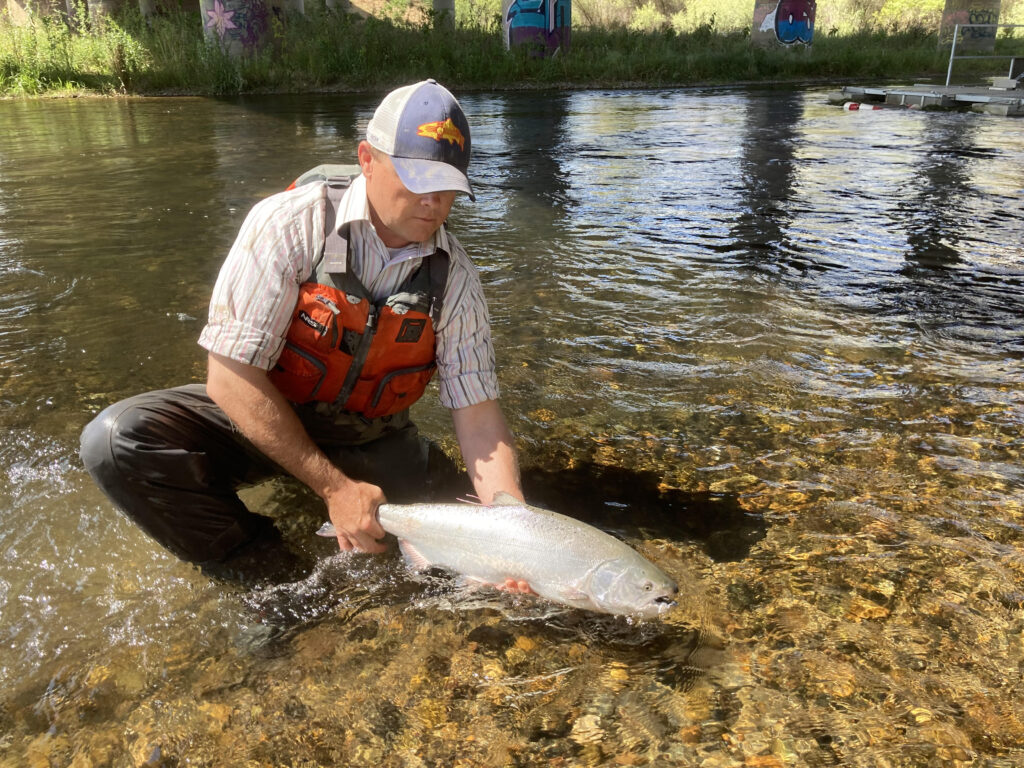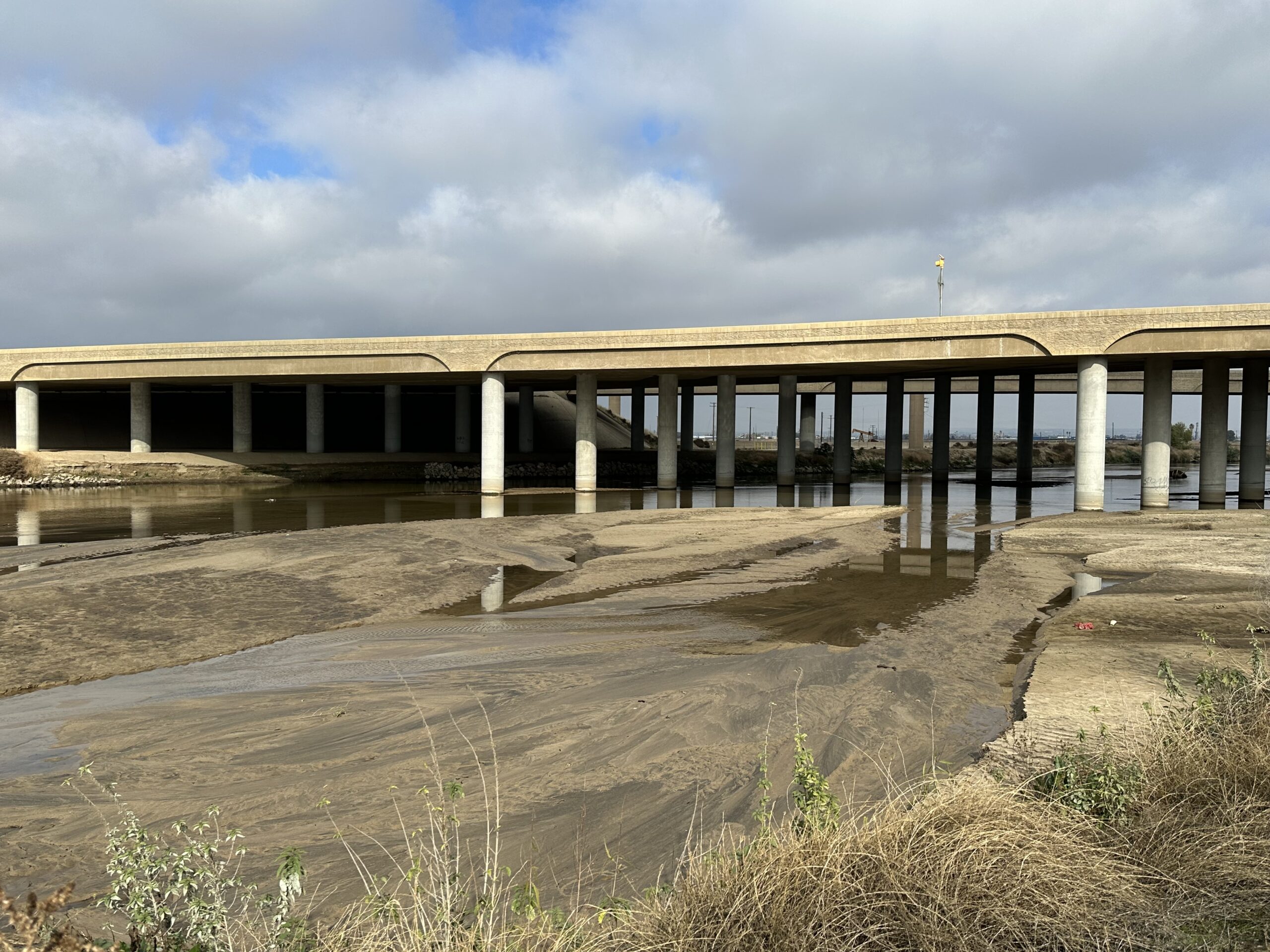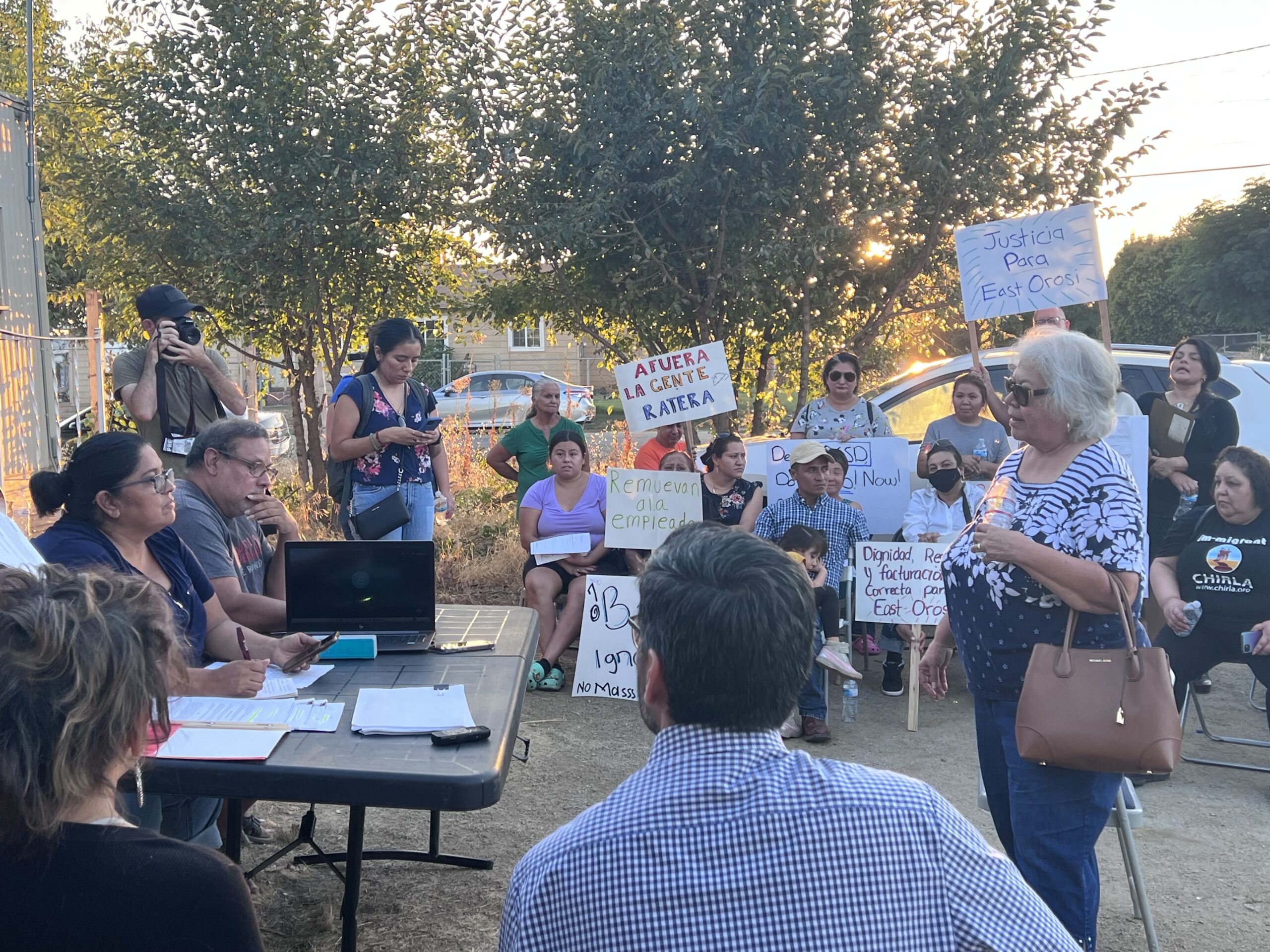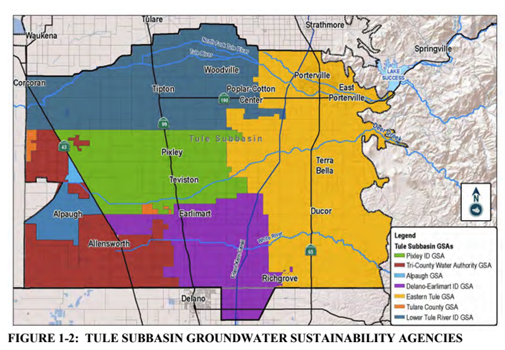Spring-run Chinook Salmon are starting to spawn in the San Joaquin River after a brutally dry, hot summer. But the success of the juvenile fish is uncertain as the drought and high temperatures continue.
Spring-run salmon, which return to the river from the ocean as adults in spring months, have been absent from the San Joaquin River for more than 70 years because of dams that dried up the river. But the federal government has reintroduced the fish in an attempt to bring back the once native population.
This year, 93 reintroduced adult fish returned from the ocean. Of those, 74 survived and are now at the top of the river near the Friant Dam northeast of Fresno to spawn. Those reintroduced fish are spawning alongside 200 salmon released from the federal government’s salmon breeding facility.
“I know the numbers don’t seem huge maybe to most people,” said Don Portz, San Joaquin River Restoration Program Manager. “This year was a remarkable year for us.”
The 366-mile-long river starts in the Sierra Nevada Mountains east of Fresno and moves north through the Central Valley and out into the Pacific Ocean through the Sacramento-San Joaquin Delta.
Spring-run Chinook salmon used to make up a large portion of California’s commercial fishing industry but disappeared from the river after the Friant Dam was built above Fresno in the 1940s. Because of the dam, the river dried up for 60 miles until its confluence with the Merced River.
In 1988, the Natural Resources Defense Council, along with other environmental groups, sued the federal government to restore the river and the salmon populations. After 18 years, the case was settled in 2006. That led to nearly $900 million in funding and creation of the Bureau of Reclamation’s San Joaquin River Restoration Program, tasked with restoring salmon populations.
As of mid-October, program managers located 19 redds, salmon nests in the gravel of the river where eggs are laid, meaning spawning is picking up speed.
Eggs will incubate in the gravel for up to two months. After hatching, the baby fish will remain in the same area of the river for about a month. They’ll then start to develop and prepare for their journey out to the ocean, where they remain for a few years before returning back up the river as adults.
It’s difficult to know this early into spawning what the exact impacts of the drought will be, said Towns Burgess, lead fish biologist for the restoration program.
“What we’re anticipating is that we’ll have some challenges with the water temperature,” said Burgess.
For spawning, the ideal temperature of the river water is below 57 degrees. But because of the drought, program managers are aiming for below 58 degrees. Even one or two degrees difference can have a serious impact. High water temperatures can make the fish sick or kill them.
The restoration program has some control over water temperatures by releasing cold water from Millerton Lake above Friant Dam. But the program’s cold water pool is small now because of the drought and managers have had to be cautious with the amount of releases so as not to deplete the cold water pool. They are able to predict water temperatures to some degree based on the releases, said Burgess.
“But it’s a big challenge, that’s not an easy feat to accomplish,” he added.
This summer, the program had to halt flows because of dwindling surface runoff in order to preserve the cold water pool in Millerton.
In the coming weeks, flows will start to increase and by December the program will focus on reconnecting the river to provide the fish with a path out to the ocean.
The program has to do more than just manage flows. Adult reintroduced spring-run salmon also need help getting back up the river. Because of dams and dry sections of the river, it’s not possible for the salmon to swim on their own all the way back up the river to spawn.
So the restoration program trucks the salmon instead.
“These fish are taking a taxi ride from Merced all the way up to below the (Friant) dam,” said Portz.
The fish are trapped and put into 600-gallon tanks on the back of trucks and transported to just below the dam, where they are currently spawning. That operation wrapped up in June. It costs about $400,000 for the trucking part of the program.
The program is working on building fish passages around dams so the salmon can eventually make the trip without help.
The restoration program salmon weren’t the only ones hitching rides this year.
There are five salmon hatcheries in the Central Valley and all of them usually truck some fish out to the ocean. But this year because of the extreme drought conditions, the four state hatcheries trucked 100% of the fish.
“This year because of the drought we trucked all of our fish to San Pablo and San Francisco Bay,” said Jason Julienne, senior environmental scientists supervisor for the California Department of Fish and Wildlife. “We’re basically cutting out a big chunk of their migratory path as juveniles to get to the ocean.”
If they hadn’t trucked all the fish, the conditions would have killed them off before they reached the ocean, said Julienne. The state has only trucked all its fish once before, during the 2012-2016 drought, he added.
The state moved about 146 truckloads of fish out to the ocean this year. That operation finished in June.
The state’s commercial fishing industry was hit hard this year. And if the salmon don’t fare well over the next few years, it will be hit hard again, said Mike Conroy, executive director of the Pacific Coast Federation of Fishermen’s Associations.
“I don’t think that there’s anybody out there who wants California’s historic salmon runs to go the way of the Dodo,” said Conroy.
Share this:
- Click to share on Facebook (Opens in new window)
- Click to share on Twitter (Opens in new window)
- Click to share on LinkedIn (Opens in new window)
- Click to share on Reddit (Opens in new window)
- Click to share on Tumblr (Opens in new window)
- Click to share on Pinterest (Opens in new window)
- Click to share on Pocket (Opens in new window)
- Click to share on Telegram (Opens in new window)
- Click to share on WhatsApp (Opens in new window)
- Click to print (Opens in new window)








